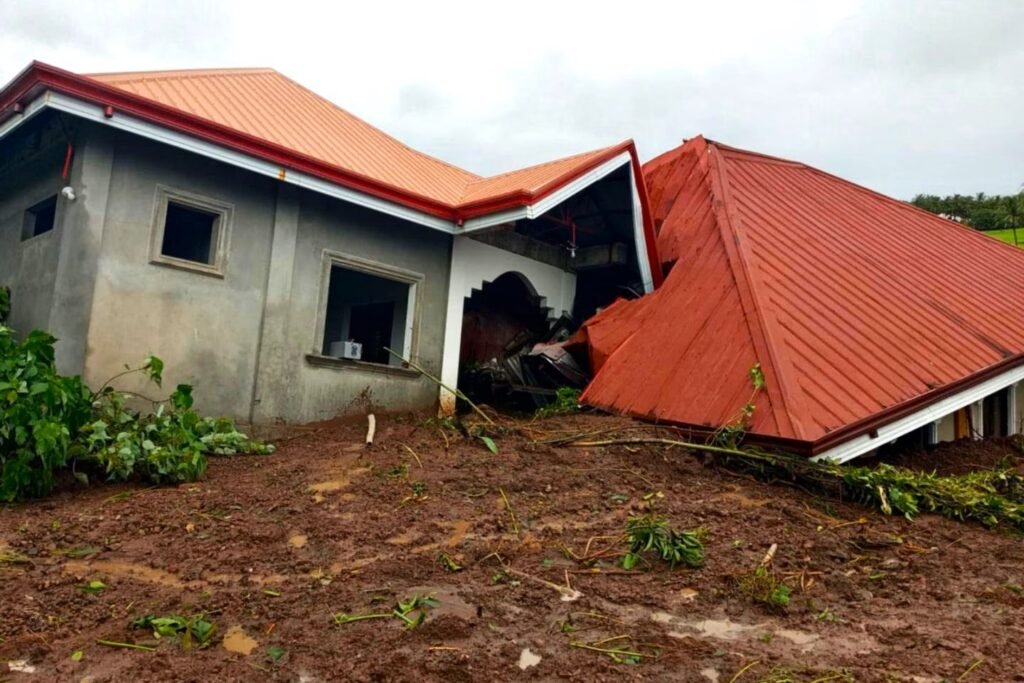TO DATE, AROUND 2,733,646 people or 765,869 families have been affected by the bad weather in all regions, except in Eastern Visayas as many calamity areas had been identified.
In a recent assessment gathered report from the National Disaster Risk and Management Council (NDRRMC), a total of 40 cities and municipalities have declared a state of calamity as of Thursday morning due to the impact of Tropical Cyclones Crising, Dante, and Emong as well as the Southwest Monsoon or Habagat.
And the NDRRMC reported these past two days that affected areas include the entire province of Cavite covering 23 cities and municipalities, as well as 17 areas in other provinces and Metro Manila. These are: Cavite province, Mangaldan, Umingan in Pangasinan, Meycauayan, Paombong, Balagtas (Bigaa), and Calumpit in Bulacan, Masantol, Pampanga, Paniqui, Tarlac, Agoncillo, Batangas,San Mateo, Rodriguez (Montalban), and Cainta in Rizal, Roxas, Palawan, Barbaza and Sebaste in Antique, Malabon City, and Quezon City.
Aside from these areas, the NDRRMC said that aside from these 40 areas, nine others are now officially under a state of calamity: Marikina, Manila, and Las Piñas in Metro Manila, Dagupan City, Calasiao, Lingayen, Malasiqui, and Sta. Barbara in Pangasinan, and Cebu City.

AFFECTED POPULACE
Regions with the most number of affected individuals was Central Luzon with 1,545,370, followed by Negros Island Region with 178,781, and Calabarzon with 173,108. Floods, landslides, collapsed structures, and tornadoes were reported in the affected areas.
The overall total affected population, 147,521 people or 40,487 families were staying in evacuation centers, while 97,958 people or 23,830 families were taking shelter in other places.
FATALITIES
As of yesterday, Friday, there were three fatalities reported in Calabarzon and Northern Mindanao. Two deaths were reported in Western Visayas. One fatality was reported each in Mimaropa, Davao Region, Caraga, and Metro Manila.
In Barangay Poblacion in Mambajao, Camiguin, the victim was hit by a falling tree on July 19. She was brought to a hospital but she was declared dead on arrival due to trauma secondary to external injury. In Barangay Matin-ao in Mainit, Surigao del Norte, another victim was riding his motorcycle from a friend’s house when a tree collapsed and hit him.
Eight people were reported missing while eight others were reported injured, the NDRRMC said. The death toll due to Crising, Dante, Emong, and Habagat is now 12.
The extent of damage was reported at P3,770,744,291 for infrastructure, P366,377,015 for agriculture, P281,660,000 for irrigation systems. A total of 2,431 houses were damaged—2,008 partially and 423 totally, according to the NDRRMC.
TRANSPORT-UTILITIES
Two affected airports have returned to normal operations as of Friday evening. A total of 93 passengers, five rolling cargoes, and four vessels remained stranded as only 35 of 62 seaports have returned to normal operations.
Power has been restored in 113 of 126 affected areas. Water service is now operational in three of four affected areas. Meanwhile, communications lines are back in 27 of 28 affected areas. Only 203 of 307 affected road sections and seven of 21 affected bridges became passable again to motorists.
SUSPENSION OF CLASSES
Last Thursday, the Department of Education (DepEd) said a total of 24,648 schools have suspended in-person classes. Amid these disruptions, several school division offices have implemented alternative learning modes.
“The Disaster Risk Reduction and Management Service (DRRMS) has recorded 1,876 classrooms with minor damage, 562 with major damage, 531 that are totally damaged, and 232 damaged hygiene facilities,” DepEd said.
A total of 270 schools in 10 regions are currently being used as evacuation centers, including Ilocos Region, Cagayan Valley, Central Luzon, Calabarzon, Mimaropa, Western Visayas, Zamboanga Peninsula, Cordillera Administrative Region, Metro Manila, and Negros Island Region.
DepEd reported that in these areas, face-to-face classes remain suspended, with some schools experiencing class disruptions for up to four consecutive days.
